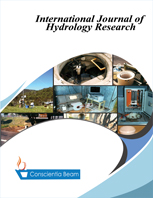Challenges of Groundwater Development for Towns and Big Cities Water Supply in Rift Valley Areas
DOI:
https://doi.org/10.18488/journal.108.2020.51.17.31Abstract
The experiences of the last 30 years developed an understanding in the Addis Ababa Water Utility that groundwater sources are not fully dependable for such a big city. Notwithstanding this, additional wells and well-fields are being developed especially in the last 10 years to meet the ever increasing demand. The Akaki well-field was initially designed for an abstraction rate of up to 35,000 m3/day for 20 years until 2020 though the current abstraction rate is nearly ten-fold. The current developments are only demand driven irrespective of safe and sustainable utilization. What is making things worse is the rise of other water competing demands for irrigation projects in adjacent well-fields. The present water supply coverage of the Addis Ababa city is not more than 50%. The situation in other urban centers in the Upper Awash basin is not different. Conceptual modelling, time series well water level measurements and operational assessments showed that the aquifer systems are not uniform and dotted with many volcanic flow barriers; there is sharp decline of water table (up to 70 meters since 2000) in some well-fields and the decline is propagating upstream of the Akaki well-field. Moreover, the excessive and uncontrolled pumping is impacting regional groundwater table. Topographic and technical issues are hampering upstream water distribution, and the once exemplary hundreds of wells are now abandoned. The frequent tapping of thermal and high fluoride water is another complication. Unless proper intervention is devised, grave environmental problems are likely to come in the near future.

